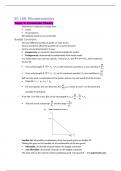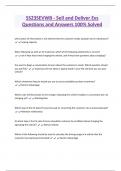Class notes
Lecture notes EC109. Microeconomics (EC109) - Score a First Too
- Course
- Institution
Providing an in-depth and well-written summary of all the necessary components for the EC109 course at the University of Warwick. These are the lecture notes for the first year of Microeconomics. From a student who scored a high first (>75%) and received the Oliver Hart prize.
[Show more]




